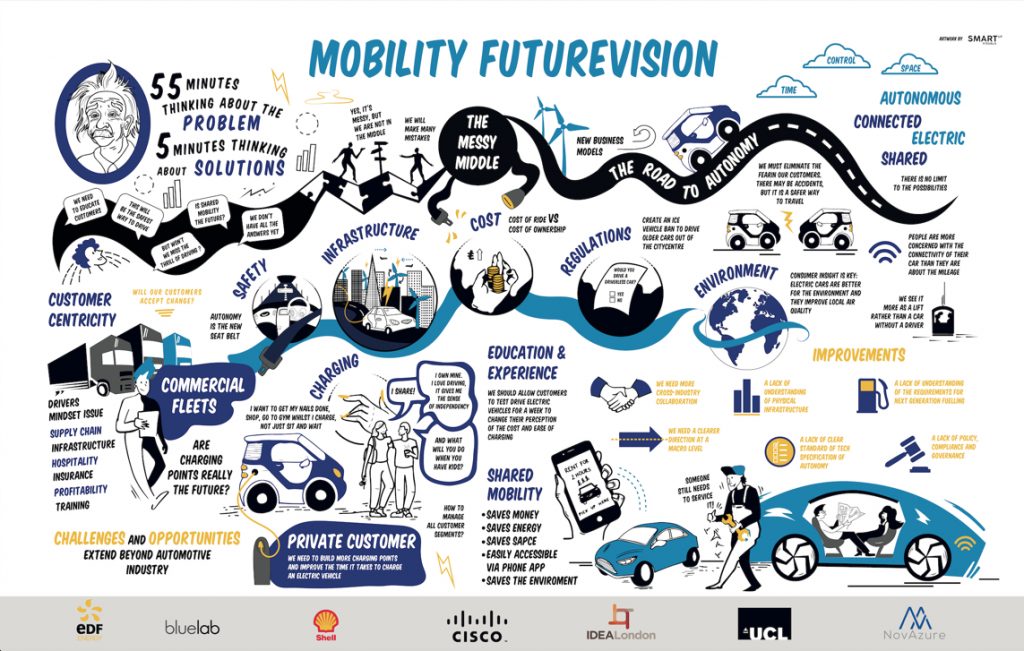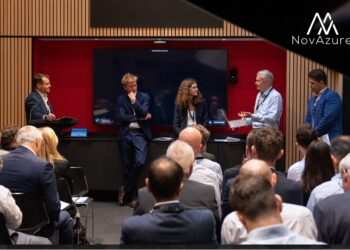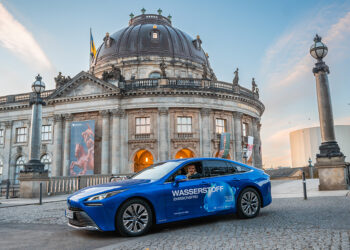Over the past year or so, a new acronym has been cropping up in discussions on mobility: ACES.
Standing for ‘Autonomous, Connected, Electric, and Shared’, ACES typically refers to vehicles of the future which will be, well, autonomous, connected, electric and shared.
But while acronyms might be handy for simplifying long names or phrases, last week’s ACES Mobility Accelerator at IDEALondon proved that it’ll take more than a new string of letters to simplify the future of mobility.
Each of these interrelated sectors is developing at its own pace, and faces its own hurdles to mass adoption. While government policy is already driving progress for the adoption of electric vehicles, there’s no such direction as yet for autonomous, connected, or shared transport.
Questions facing the future of mobility stretch across everything from legislation to insurance and security. They even cover more ethereal ideas – as one attendee at the ACES Mobility Accelerator suggested – like identity and how our vehicles shape us as people.
Starting with the problem
Perhaps accordingly, the event was focused from the outset on the root questions and challenges faced by players in the ACES space – rather than immediately pursuing solutions to these challenges.
To emphasise this approach, Jean Jacques Jouanna of consultancy firm NovAzure Consulting invoked a quote often attributed to Albert Einstein: “If I had an hour to solve a problem I’d spend 55 minutes thinking about the problem and 5 minutes thinking about solutions.”
Attendees on the day – including experts from across the energy, transport, technology, and automotive industries, as well as government representatives and a host of innovative start-ups – were tasked with unpicking three overarching questions.
- What customer expectations will drive the market?
- What resistance to adoption can be expect?
- And what challenges do industries face as a result of these expectations and resistance to adoption?
The breadth of these questions, and the discussions they triggered, reflects the huge reach and impact that ACES will have.
Increasingly, mobility isn’t simply a transport sector issue, and the journey to wide-scale ACES adoption will impact multiple industries: including OEMsand suppliers, oil and gas companies, telecoms networkers, Mobility as a Service innovators, and even those working in the hospitality and entertainment looking for new markets to expand into. And that’s before you even consider the likes of supply chain operators, insurers, and government policymakers.
But regardless of this huge scope, said NovAzure Consulting Jouanna, everything will ultimately boil down to the customer – and what’s in it for them.
Voice of the customer
Edith Bardin, a global insights manager for fuels, fleet solutions and future trends at Shell, explained by way of example some of the pressures that fleet managers are experiencing.
When facing challenges such as resourcing issues, regulatory pressures, and a desire to optimise efficiency, most fleet managers understand that technology and business innovation have a role to play, said Bardin.
But the main barriers to adoption of new technologies and approaches are proving tough to shift. Namely, attitudinal barriers, human resourcing issues, struggles to secure upfront investment to test out new approaches, and the issue of bringing in and integrating new technical systems.
What’s more, said Bardin, these barriers will all need to be addressed in tandem for solutions to be adopted effectively.
Doing this gets even trickier when you consider the uncertainty in the wider transport industry as to whether new industry innovations – such as those represented by ACES – should be considered a threat or an opportunity.
Strong foundations
You always face a degree of resistance when encouraging people to adopt new technology, said Cisco’s Nick Chrissos.
But Nick also argued that many of the challenges that Shell’s Edith Bardin had outlined become more manageable when you focus on providing infrastructure that can deliver a more seamless customer experience.
This was echoed by Axel Jaegle, from the government’s Infrastructure & Projects Authority, who said that, when it comes to preparing the UK for more electric vehicle usage, many of the customer expectations his teams are dealing with are largely infrastructural.
And for Nissan’s Peter Stephens, this highlights the need to consider how customers – everyone from early adopters to those still driving their old cars – can be given a seamless connected experience.
Niall Riddell, who leads on electric vehicle propositions at IDEALondon partner EDF, said there’s a role for business to play in adding trust and removing the fear associated with new technologies.
When you skydive for the first time, he said, the fact that you have an expert strapped to your back doesn’t stop it from being scary. But if that expert is focused on delivering a great experience for their customer, it can go a long way to minimising the experience anxiety the customer will inevitably have when doing something for the first time.
It’s the same for businesses bringing new technologies, and bold new experiences, to market.
All of this, it was agreed, won’t happen without a greater degree of collaboration – something, of course, that’s at the heart of Cisco’s approach to innovation more generally.
Attendees on the day also heard from a number of innovative ACES start-ups, who were able to offer their own unique takes on the space
Break it down
By the time everyone at the event was split up into groups for a deep dive into the four areas making up our ACES acronym, one thing had become clear: there are so many factors to consider, that cut across so many different sectors, that there’s still a lot of work to be done in unpicking the roots of these challenges.
So when you’re trying to answer a question like ‘What is standing in the way of the uptake of autonomous vehicles?’ it makes sense to break that challenge down into its constituent parts, and think about how each problem might affect different sectors and groups of people.
And as the four groups deliberated – with one focusing on autonomous vehicles, another on connected, another on electric, and one looking at shared – it was clear that cross-sector collaboration within these groups was already yielding ideas that previously hadn’t been considered.
The result was a much greater understanding of the challenges faced by those working to make ACES mobility a reality.
The need for better public education on the topic came out as paramount, as well as the importance of providing solutions that offer consistency and clear benefits to customers.
Business models, as well as policy and legislation, will need to shift and adapt to incorporate the changes that ACES vehicles will bring to all parts of our lives. Appropriate infrastructure will of course be vital too.
The next step, of course, is to put some of these ideas to the test and to develop solutions to the challenges that were articulated at the end of the day’s workshop sessions; challenges such as whether we can assume autonomous vehicles will all be electric, and that infrastructure deployed for them should reflect that.
Author: Nick Chrissos from Cisco





